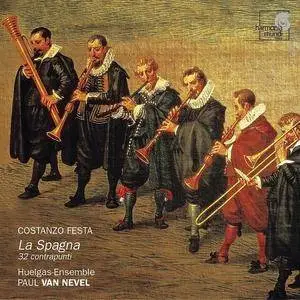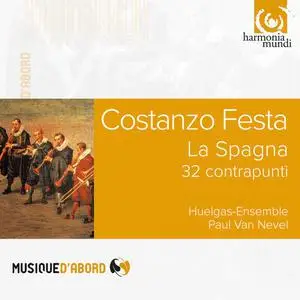Huelgas Ensemble, Paul van Nevel - Costanzo Festa: La Spagna - 32 Contrapunti (2003)
EAC | FLAC (image+.cue, log) | Covers Included | 52:08 | 270 MB
Genre: Classical | Label: Harmonia Mundi | Catalog: HMC 801799
EAC | FLAC (image+.cue, log) | Covers Included | 52:08 | 270 MB
Genre: Classical | Label: Harmonia Mundi | Catalog: HMC 801799
The cycle of 125 variations that Costanzo Festa composed on the famous melody called La Spagna is conceived on a scale unique during the Renaissance, and may justly be described as a compositional tour-de-force. It has been comparisons to works such as Johann Sebastian Bach's Goldberg Variations. This budget priced reissue, released for the first time in 2003, features a selection of these variations performed by the Huelgas-Ensemble.



